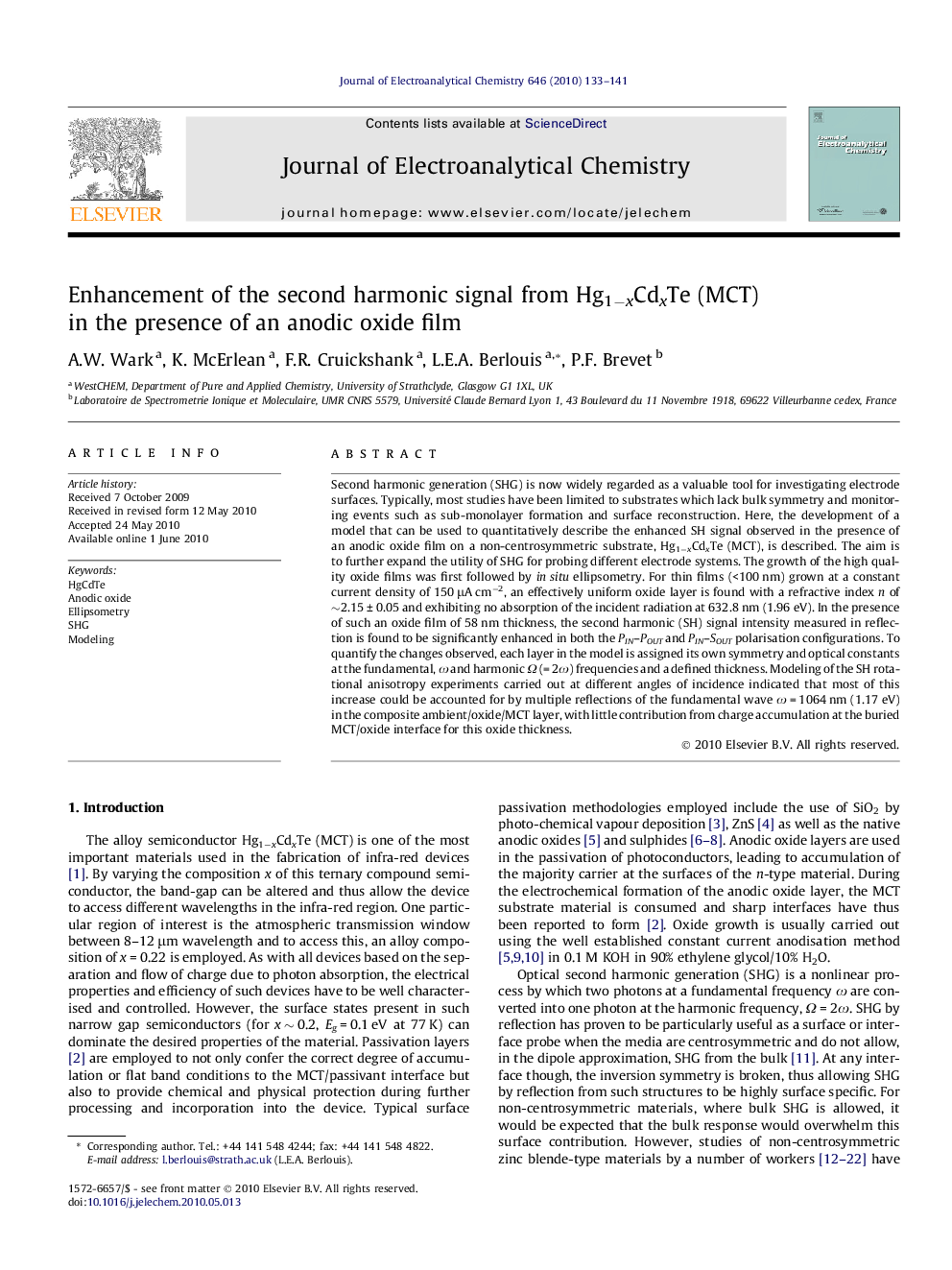| Article ID | Journal | Published Year | Pages | File Type |
|---|---|---|---|---|
| 219830 | Journal of Electroanalytical Chemistry | 2010 | 9 Pages |
Second harmonic generation (SHG) is now widely regarded as a valuable tool for investigating electrode surfaces. Typically, most studies have been limited to substrates which lack bulk symmetry and monitoring events such as sub-monolayer formation and surface reconstruction. Here, the development of a model that can be used to quantitatively describe the enhanced SH signal observed in the presence of an anodic oxide film on a non-centrosymmetric substrate, Hg1−xCdxTe (MCT), is described. The aim is to further expand the utility of SHG for probing different electrode systems. The growth of the high quality oxide films was first followed by in situ ellipsometry. For thin films (<100 nm) grown at a constant current density of 150 μA cm−2, an effectively uniform oxide layer is found with a refractive index n of ∼2.15 ± 0.05 and exhibiting no absorption of the incident radiation at 632.8 nm (1.96 eV). In the presence of such an oxide film of 58 nm thickness, the second harmonic (SH) signal intensity measured in reflection is found to be significantly enhanced in both the PIN–POUT and PIN–SOUT polarisation configurations. To quantify the changes observed, each layer in the model is assigned its own symmetry and optical constants at the fundamental, ω and harmonic Ω (= 2ω) frequencies and a defined thickness. Modeling of the SH rotational anisotropy experiments carried out at different angles of incidence indicated that most of this increase could be accounted for by multiple reflections of the fundamental wave ω = 1064 nm (1.17 eV) in the composite ambient/oxide/MCT layer, with little contribution from charge accumulation at the buried MCT/oxide interface for this oxide thickness.
